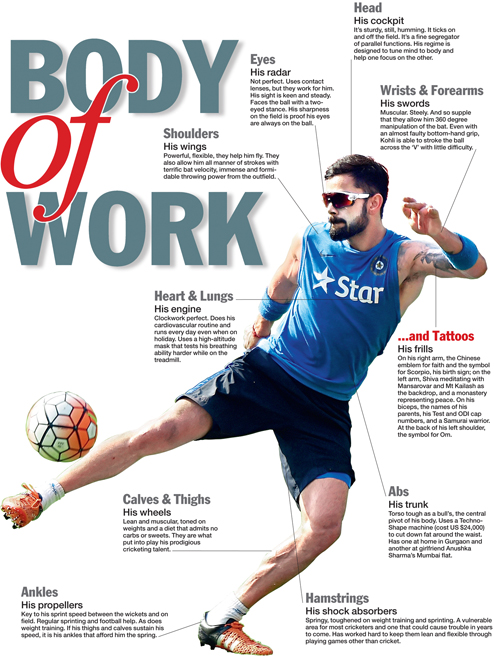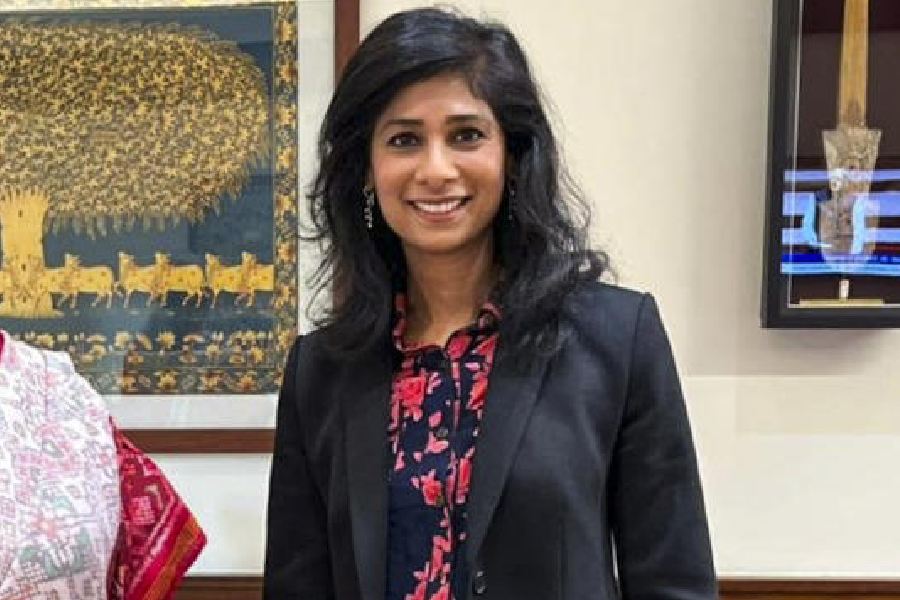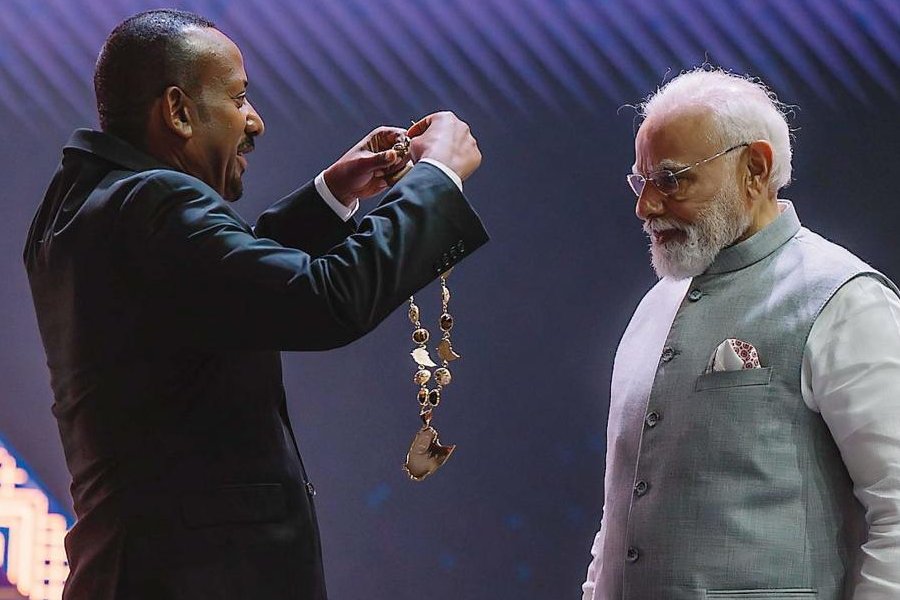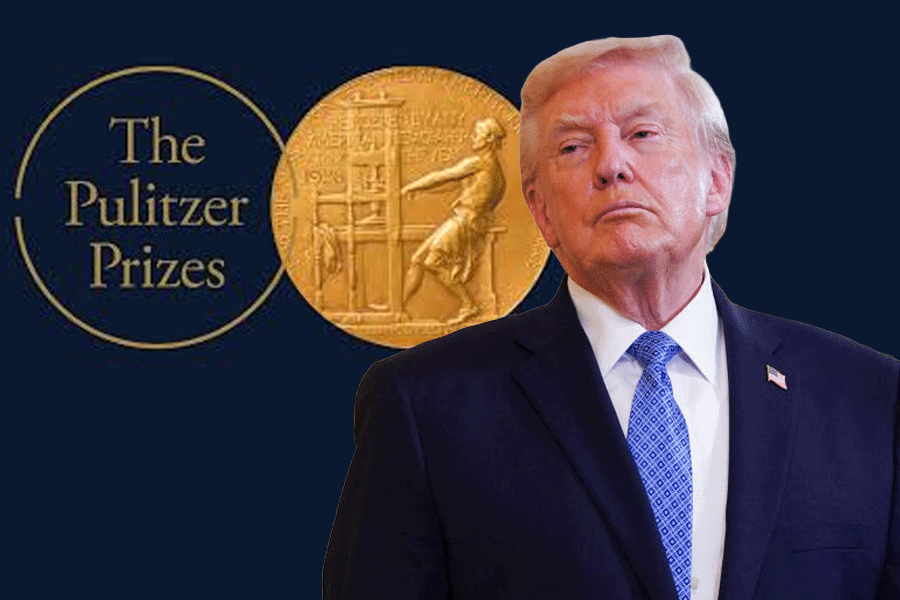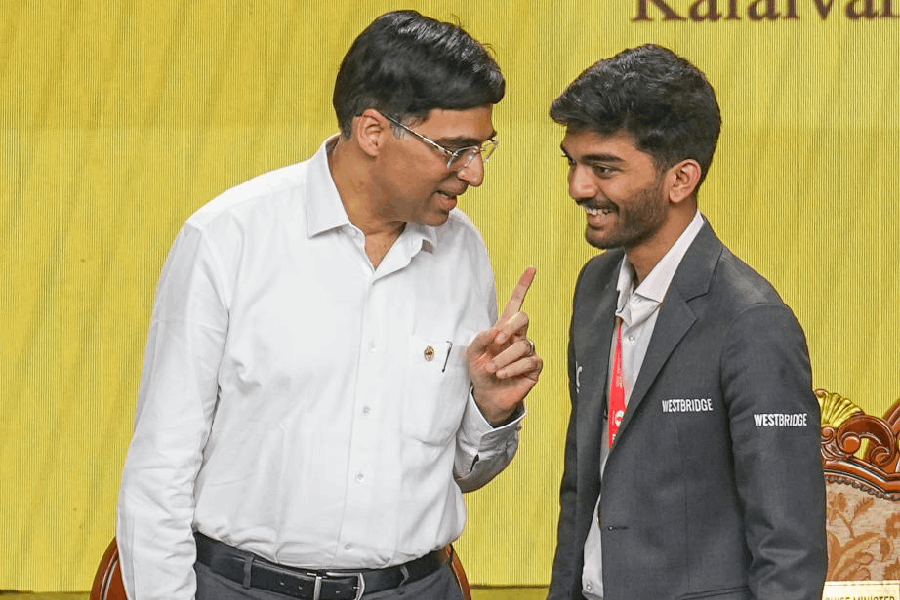When the time comes to write the history of the reign of Virat Kohli the Great, it would probably be incomplete without a chapter on the day, sometime in early 2015, when Kohli walked up to Shanker Basu, the long-time strength and conditioning coach of his IPL team, the Royal Challengers Bangalore, and told him, "I want to become the fittest player. Let's do it."
Basu, 48, a Chennai-based trainer and former sprinter, had been trying to convince Kohli to adopt a new training method to enhance speed and strength - shun the muscle-specific gym routine, embrace the Olympic-style weightlifting regime to upgrade and sync muscle and mind. Kohli had once backed out complaining of aches and pains after trying weights. But Basu persisted. And Kohli was now ready.
"Once I convinced him about the scientific part of it, there was no looking back. He wanted to become one of the fittest players in the world of sport, not just cricket," says Basu, who is now Team India's strength and conditioning coach.
"Track and field athletes have been doing weightlifting for decades. Cricketers, especially batsmen, have never even thought of going anywhere near the barbells," says Amogh Pandit, strength and conditioning coach with the Mumbai Cricket Association. But Kohli clearly is in a different league. His friend and manager Bunty Sajdeh says: "He was deeply impressed by the fitness of players such as Kevin Petersen and AB de Villiers. He just looked at himself in the mirror one day and said he will change himself to compete with the best."
The India captain now does a combination of lifts - power clean, snatch, and clean and jerk - three days a week with weights ranging from 45 to 70 kilos. Each of his weightlifting sessions lasts 45 minutes with 7-8 repetitions. This is in addition to regular cardiovascular and injury-prevention exercises.
The new routine has been around only a year-and-a-half but the results are there to see. His body is better toned than ever before; his body fat is down to a mere 9 per cent - just like Portuguese football superstar Cristiano Ronaldo's - down from 20 per cent a few years ago. This is close to the levels of the fittest athletes around; most of Kohli's teammates range between 15 and 18 per cent, which is considered decent. Kohli feels that he can run faster and has more strength in his lower and upper body than ever before. Basu says Kohli has started clearing the boundary effortlessly in the last one year or so.
"Virat now feels he has a new body and he can do anything on the field; his game now revolves around his supreme fitness," Basu says.
As Kohli officially takes over the reins of the Indian team in all the three formats starting with today's ODI against England in Pune, he will be thirsting to resume from where he left off last year.
In 2016, Kohli scored over 1,500 runs in Tests including three double centuries, 750 ODI runs including three centuries and over 450 runs in T20 Internationals. Not to mention his record-breaking 973 runs in the 2016 edition of the IPL with an eye-popping average of 81.08.
Diet is another area that Kohli has concentrated on a great deal in recent years. His first coach, Rajkumar Sharma, says that his ward has not eaten a roti for many years now. According to Amit Singh, director of food and beverages at Taj Bengal in Calcutta, Kohli sticks to the hotel's famous fluffy three-egg white omelette and brown toast cut from a fresh loaf with peanut butter for his breakfast. He has chicken and spinach for lunch and dinner whenever he is in Calcutta. His love for spinach is almost Popeye-like with sarson ka saag at coach Sharma's place being his favourite. On field, he often munches roasted chana (gram).
He also consumes fish oil capsules with meals. Basu says that Kohli eats small meals at regular intervals and they comprise boiled vegetables, bhutta (corn), fresh fruits and nuts. He is often seen munching roasted bhutta or nuts and walking in and out of team hotel gyms regularly while others cool their heels in their rooms after a hard day on the field.
Nutritionists can't stop raving about Kohli. "When we say nutrition and fitness can make you achieve peak performance, he is practically proving this science on the field," says Kinita Kadakia Patel, a Mumbai-based nutritionist with the Mumbai Indians IPL team.
"There has never been a doubt about his talent or his mind and the determination to succeed at the highest level. Now he has added fitness to his arsenal. International teams better watch out," warns Chetan Chauhan, former India opener and an observer of Kohli since his junior days.
It isn't that Kohli was ever considered overweight or was slow on the field. But after a lean IPL season in 2012, Kohli - he was revelling in a rockstar lifestyle off the field with long nights out and an occasional drink - decided to turn a new leaf. Almost overnight, he became a regular at the gym and started following a strict diet. The results started to show with him losing more than 10 kilos from the peak of 84 he had hit in 2012. His weight now hovers around 75 kilos, most of it muscle and bone.
"Even as a teenager he could throw the ball from the boundary to the stumps. He was that strong," says coach Sharma. As for his steely wrists and grip on the bat which is very low yet flexible, Sharma says that he let it be. "At first I used to scold him a lot for not playing in the 'V' and for being very wristy. I was slightly worried he could face problems against the swinging ball. But he was too good." He credits Kohli's strong wrists for hundreds of "throwdowns" that he faced in the nets every day. He also gives his wrists a wringing in the gym.
Besides his body and technique, Kohli's biggest strength remains his mind. Something that B. Purushottam Bam, sports psychologist and mental conditioning coach, realised when he first met Kohli in Mumbai in July 2009. "It was just a day or two before India's emerging players left for Australia. I felt that he was a thinking cricketer and was deeply interested in understanding the psychological side of approaching the game," Bam says.
According to Bam, Kohli is a perfect "role segregator", something he showed even as a teenager. For instance, just after a month of his first class debut for Delhi, he lost his father on the night of December 19, 2006, when he was 40 not out with Delhi being four wickets down for 80 odd runs and risking a follow on against Karnataka. Despite his father's dead body at home, Kohli resumed his innings, scored a calm 90 runs and then went home for the last rites. "That one incident shows the strength of his mind. It was a disaster for his family, but he could come out of it and live the role of a cricketer on the pitch," Bam says.
A burning desire to succeed is something that Kohli always displayed. "He used to get restless waiting for his turn to bat. The state of the pitch or how lethal a bowler was didn't matter to him. Once he is on the pitch, he shuts everything off and wants to play every ball. That's why he is such a good chaser," Sharma says. But that's also down to what he has achieved with his body; at the end of a whole day at the crease and 200-plus to his name, Kohli still runs the fastest threes in the business. That doesn't come easy.
Portrait of an artist as a strong man


